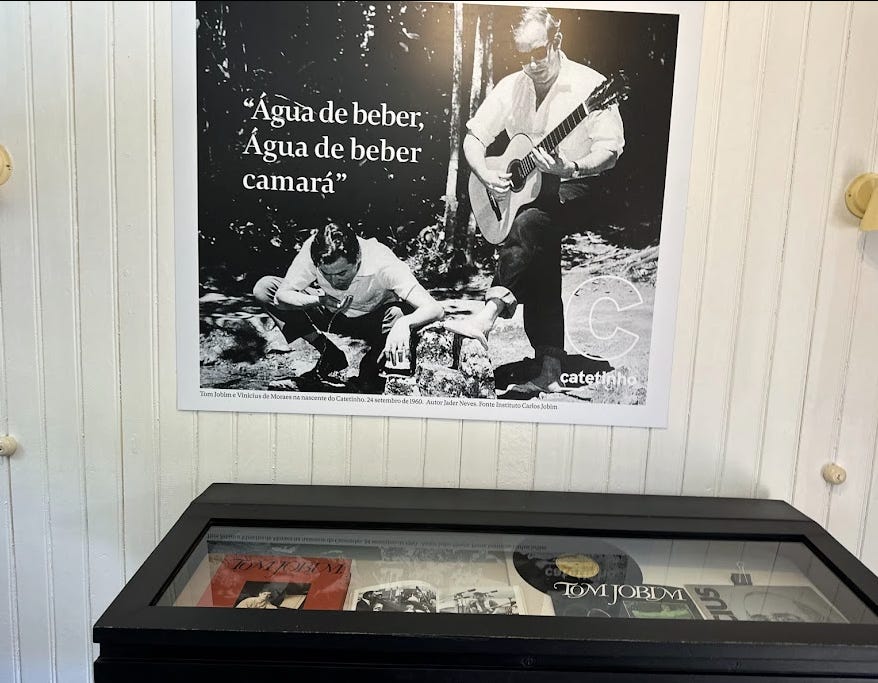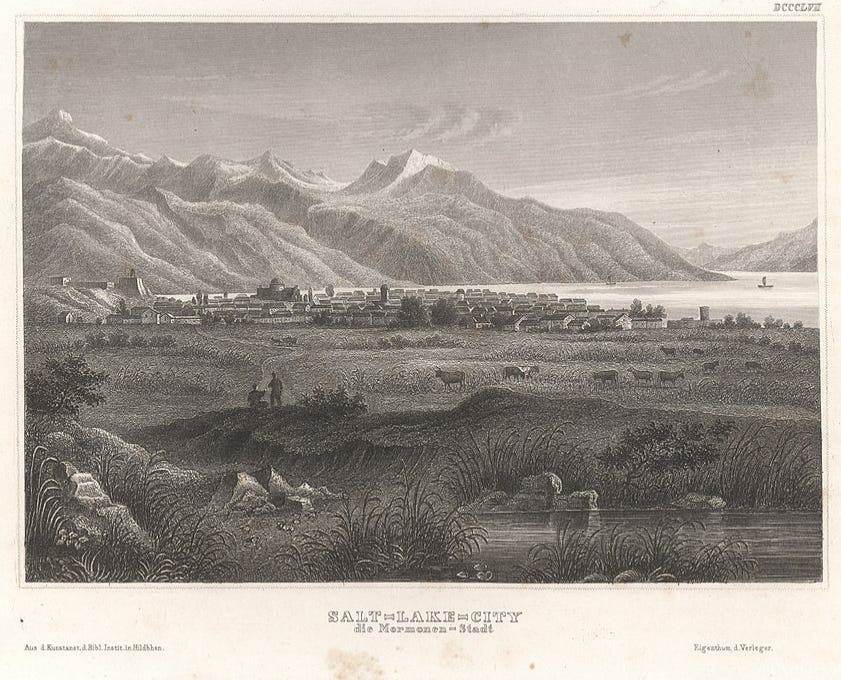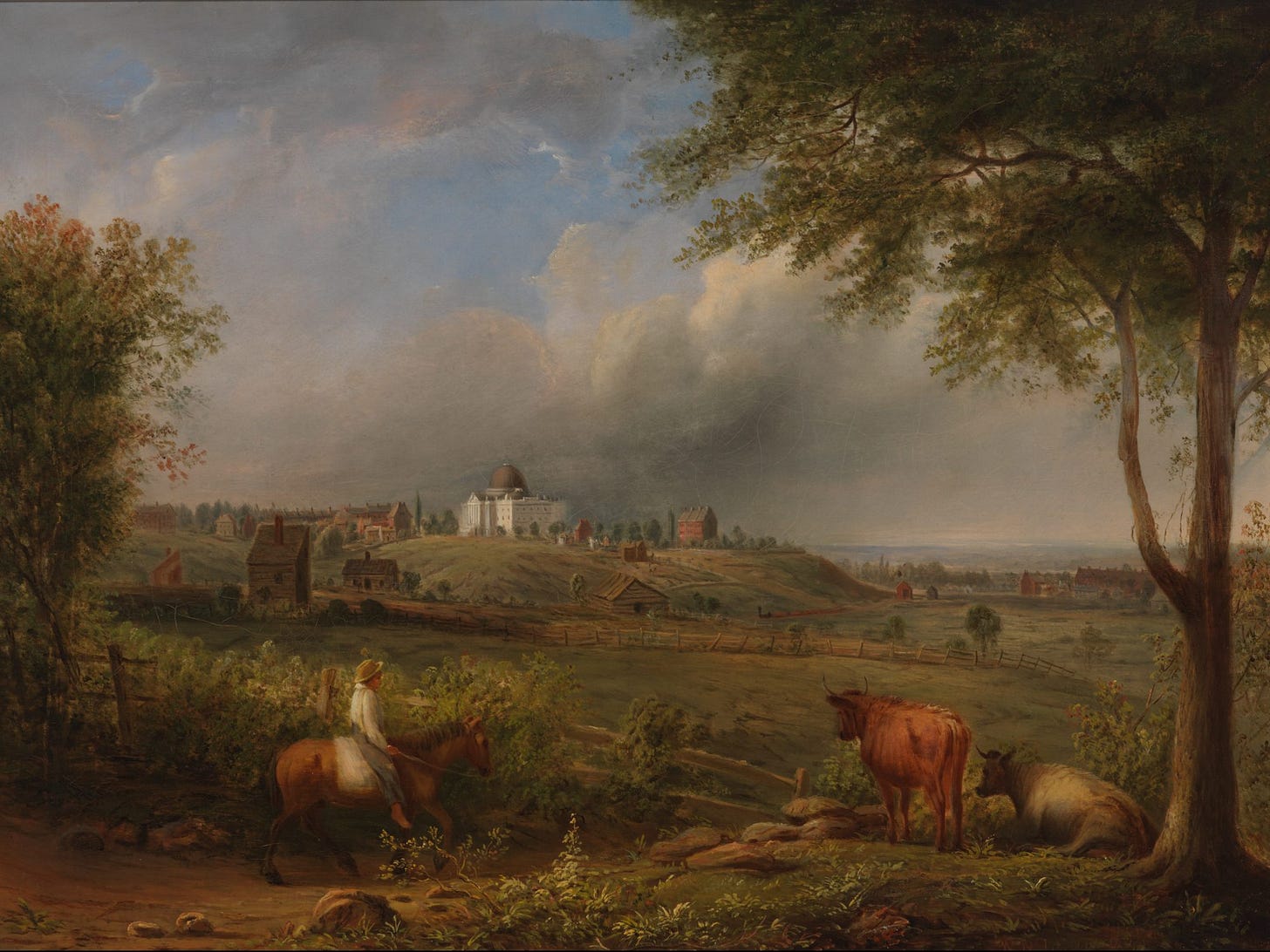Creating Brasilia
Charisma, energy and founding new cities
A few miles from the center of Brasilia lies a small two-story wooden building called the “Catetinho”. This tiny structure, similar in size and decor to a rural elementary school building, would be completely irrelevant were it not for the fact that it was the first structure built in Brasilia, and the headquarters from which the entire city was created in less than four crazy years.
The founder, creator and orchestrator of this mad endeavor was the then President of Brazil, Juscelino Kubitschek. Through determination, force of will and inexhaustible energy he took it upon himself to move the capital of Brazil from Rio de Janeiro into the Brazil’s interior wilderness, and he was determined to do it all within his presidential term.
The place from which this all was led was this structure pictured below. It was built in ten days in the middle of the mato by a small group of men. It was from here that the then president of Brazil and his team mapped out and drove the development of Brasilia.
Visiting the Catetinho, it’s hard not to wonder how such a massive undertaking was possible in such a short period of time. How did he do it? What did it take to build an entirely new capital city? And in the end was it good or bad?
The Tireless Man from Minas
In the article “BRAZIL: The Man from Minas”, Time Magazine interviews the newly elected President Kubitschek. The article is a fascinating glimpse into the world in 1956 and it’s also a window into the President - his tireless energy, his plans for the future, his history… But even more remarkable is the fact that Brasilia is not mentioned once! Planning for Brasilia - the city which is about to dominate this man’s life and remake his country - has not started when he first enters office…
Kubitschek’s focus was to accelerate Brazil’s economic development — he had the slogan “Fifty Years’ Progress in Five,” and he was tireless in pursuing his work.
Kubitschek was famously energetic and had what Tyler Cowen would call “founder energy”: he preferred oral briefings to written reports, had no hobbies other than work, would start at 7am and stay up late into the evening, and famously bragged, “What I start, I finish.”
The idea of moving the capital of Brazil from Rio de Janeiro on the coast towards the interior of Brazil, goes back into the 1800s. Centralizing capital cities is a favorite political Euclidian pastime and there were always good arguments in favor of doing so including a vision from an Italian “saint” Dom Bosco, in 1883… However, moving away from Rio - the capital of Brazil since 1763 and the capital of Portugal between 1808-1821 – seemed like a completely insurmountable pipe dream. Even though the idea of relocation was in the 1891 Constitution, it was nothing more than words on paper.
However, that all changes with Kubitschek. “Kubitschek’s first encounter with the project came from a heckler at a Goiás rally during the 1955 campaign. “What about Brasilia?” yelled the heckler. Kubitschek yelled back: “I will implement the constitution. [Kubitschek] recalls: “I had hardly considered Brasilia before then.”
It’s remarkable how little moments can have such large consequences… This heckler’s comment triggered a promise from Kubitschek that then consumed his life. A little spark that changed the course of Brazil’s history.
Inside the Catetinho
From the inside, the Catetinho looks remarkably unremarkable. There are a few bedrooms and bathrooms. A couple offices. A kitchen. And that’s about it.
Here is there hand-sewn flag of Brazil they had up on their wall.
Here is one of the offices and bathrooms.
This was the President’s office preserved in its 1950s furnishings.
Here is a memento to when Tom Jobim came to visit and played some music while they were building Brasilia…
And you can also still see their radio, the Panair bag, some bottles from their bar where they hung out at night, and the oil lamps in lieu of electricity.
On one of the walls there is the following quote from a visiting Brasilian musician at the time:
"[Catetinho] onde se acordava cedo para o trabalho, mas onde as noites intermináveis, escuras como breu, eram amenizadas pelo meu violão. Um verdadeiro lenitivo para aquele período de lutas e sacrifícios... Orgulho-me desta modesta colaboração que a minha música conseguiu proporcionar àqueles intrépidos pioneiros"
Dilermando Reis
/
"[Catetinho] where we woke up early for work, but where the endless nights, as dark as pitch, were softened by my guitar. A true solace for that period of struggles and sacrifices... I am proud of this modest contribution that my music managed to provide to those fearless pioneers."
Dilermando Reis
Walking through the Catetinho feels like stepping into a 1960s version of a startup. Makeshift furniture, a lot of coffee, and a group of tireless people pulling long shifts trying to make their vision reality —except their vision was building an entire capital city.
And while the story of Brasilia as startup city is striking on its own, it echoes other founding stories. Through a combination of strong leadership, apocryphal visions and sheer determination, cities are sometimes created out of thin air.
Salt Lake City
Salt Lake City was founded on July 24, 1847, by a group of Mormon pioneers. […] The settlers came to the valley in search of a region where they could practice their religion, free from hostile mobs and persecution. When Young first saw the valley he said, "This is the right place."
Tel Aviv
“On 11 April 1909, 66 Jewish families gathered on a desolate sand dune to parcel out the land by lottery using seashells. This gathering is considered the official date of the establishment of Tel Aviv.”
“[The name Tel Aviv] was found fitting as it embraced the idea of a renaissance in the ancient Jewish homeland. Aviv (אביב, or Abib) is a Hebrew word that can be translated as "spring", symbolizing renewal, and tell (or tel) is an artificial mound created over centuries through the accumulation of successive layers of civilization built one over the other and symbolizing the ancient.”
Tenochtitlan
“Tenochtitlan, the capital of the Aztec Empire, was founded by the Aztec or Mexica people around 1325 C.E. According to legend, the Mexica founded Tenochtitlan after leaving their homeland of Aztlan at the direction of their god, Huitzilopochtli. Huitzilopochtli directed them to build where they saw an eagle perched on a cactus, eating a snake. When they saw this exact scene on an island (located in what was once Lake Texcoco), they interpreted it as a sign from their god and founded Tenochtitlan on that island.”
St. Petersburg
From the very beginning Peter I saw St. Petersburg as a regularly planned and European looking city. He invited architects, engineers, painters, sculptors, gardeners and experts in applied art from Europe to live and work in the new capital. […]
Russian soldiers were the first to construct [Saint Petersburg]; by the autumn 1703 over twenty thousand working men participated in the works. […] Peter I compelled thousands of peasants and working people, and hundreds of merchants and noblemen to move to St. Petersburg.
Washington D.C.
“In the Compromise of 1790, Madison, Alexander Hamilton, and Thomas Jefferson agreed that the federal government would pay each state's remaining Revolutionary War debts in exchange for establishing the new national capital in the Southern United States.
On July 9, 1790, Congress passed the Residence Act, which approved the creation of a national capital on the Potomac River. Under the Residence Act, the exact location was to be selected by President George Washington, who signed the bill into law on July 16, 1790.”
“Kubitschek’s Brasilia: Where Lately the Jaguar Screamed, a Metropolis Now Unfolds”
Towards the end of Kubitschek’s term in office in 1960 Time Magazine wrote another article on Brazil - only this time it’s about the opening of Brasilia. The article is really remarkable since it describes how rapid and frenetic the construction of Brasilia was. Some crazy quotes to give you a sense of scale:
To move the “paraphernalia of bureaucracy” from Rio to Brasilia, took 2,333 trucks leaving every 30 minutes along with countless planes landing every 2 minutes! (I find that hard to believe but that’s the quote…)
The city was built from scratch and “launched” in 43 months with 120,000 residents. (I also saw 41 months elsewhere)
60,000 workers moved to Brasilia to help with the construction and relocated mostly permanently. (I also saw 30,000 elsewhere)
Tons of ten-story government ministry buildings went up, many built in less than a month.
5,000 new miles of road were built connecting Brasilia to cities all around Brazil (e.g., São Paulo, Belo Horizonte, Fortaleza, across the jungle to Belém)
How were they able to make this happen in such a short time?
Eight months after Kubitschek’s inauguration, the Brazilian Congress created a new company called Novacap that had the power and authority to literally and metaphorically bulldoze its way towards reality. Kubitschek then delegated power to some incredible personalities that worked tirelessly to make it happen.
The head of Novacap was Israel Pinheiro: “I spent 18 months with my wife in a single room in a wooden bunkhouse. I stayed there for propaganda. If it was good enough for me, it was good enough for everybody.” “Novacap had extraordinary powers, and Pinheiro used them. He floated bond issues, snagged a $10 million Export-Import Bank loan. He expropriated [land, hired contractors, and] raided departmental budgets.”
The opposition detested it: ““The limit of insanity! A dictatorship in the desert!” cried Rio’s Correio da Manhã. “Madness,” echoed O Globo.”
But through his personal will and determination Kubitschek made it happen. As Pinheiro said, “[Kubitschek] created the spirit of Brasilia, and he got it built.”
Was the creation of Brasilia good or bad for Brazil?
Well it depends who you ask… In Brasilia almost everyone I spoke with thought that building Brasilia was for the better: Brasilia is the richest city per capita and has some of the best quality of life in Brazil; moving the city into the interior helped boost economic development and move power away from Rio de Janeiro. However, every person I talked to in Rio thought that moving the capital was a terrible decision that accounted for many of Brazil’s current problems as the politicians are isolated away from the country’s main cities and lack accountability. They also mentioned that the costs of moving the capital were an enormous financial drag on the economy that continues to this day…
In the end it’s hard to know how to judge this scale of change. The creation of an entire new capital city is almost too big a move to evaluate objectively. The changes themselves modify the future so dramatically that counterfactuals become exercises in speculation, especially over long time horizons…
Brasilia for me is a tale of a unique charismatic leader at a special moment in time and it’s a lesson about how, sometimes, history forks much faster than one would expect.













